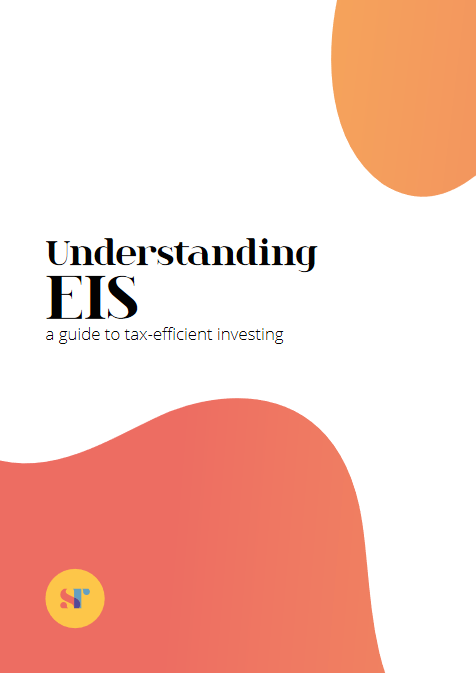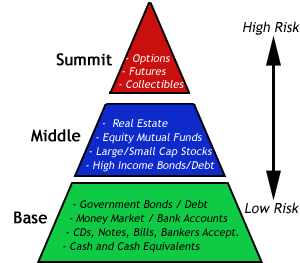
Charming phrase: High risk high return investment meaning
| IS TODAY A GOOD DAY TO INVEST IN THE STOCK MARKET |
| Ways to earn money online as a teenager |
| BITCOIN INVESTERING FAKE |
| MONEY MAKER FULL MOVIE |
| Now factory investors |
A guide to high-risk investments
The best way to think about risk is in terms of the probability of an investment either underperforming or resulting in a substantial loss of capital. A high-risk investment is therefore one where the chances of underperformance, or of some or all of the investment being lost, are higher than average. These investment opportunities often offer investors the potential for larger returns in exchange for accepting the associated level of risk.
Many high-risk investment opportunities fall under the classification of alternative investments, though not all, and are used to balance a portfolio and introduce assets that may have little to no market correlation.
About alternative investments
One can never say that there is a direct relationship between risk and reward as the nature of risk is that there may be no reward. What can be said, however, high risk high return investment meaning are bonds good investment today there is a positive correlation between the risk and the potential for return – potential being the key modifier here. Therefore, those seeking big payouts in relatively short time periods are going to have to accept a disproportionately higher level of risk.
Unfortunately, high risk high return investment meaning, most investors fall victim to illusory superiority and the optimism bias. These two cognitive biases combine to make us believe we will succeed where others have failed. And, when it comes to risky investments, high risk high return investment meaning, despite all the cards being against high risk high return investment meaning, we still believe we should take the risk.
Return on investment
To calculate the return on investment (ROI) you subtract your starting investment from what you ended at, and then divide by your starting position.
ROI = (Ending Position - Starting Position) / Starting Position
Broken down, you divide the gain, or in some cases loss, by the amount you started with. ROI is expressed as a percentage and can be positive or negative depending upon the end position of your investment.
As mentioned above, many high-risk investment opportunities fall under the classification of alternative investments, high risk high return investment meaning. While the main three asset classes – stocks, bonds and cash – are often considered safe, there are a number of high-risk bonds, and smaller cap stocks, high risk high return investment meaning, that may offer investors the potential for high returns.
Hedge funds
A hedge fund is a managed investment fund that pools capital from a large number of investors in order to invest in a variety of different opportunities and asset classes. The term 'hedge fund' high risk high return investment meaning from the paired long and short positions that the first of these funds used to hedge market risk. Hedge funds have evolved and diversified significantly since then, using multiple complex methods to mitigate risk and to seek positive returns.
More about hedge funds
Cryptocurrencies
Cryptocurrencies are digital currencies that aim to operate independently of a central bank, high risk high return investment meaning. Crypto refers to the encryption used to the transactions of the currency safe.
There are numerous cryptocurrencies in issue, though most trace their origins back to the original: Bitcoin. While there are many instances of crypto traders who have made much from the market, the markets are extremely high risk high return investment meaning and just as many, or more, have lost significant sums.
More about cryptocurrencies
Venture capital
Venture capital refers to a pooled investment fund that seeks to invest in private market companies from their early days through to their last funding round before exit (either through a trade sale, IPO, or other). Venture capital is deemed a long-term, risky investment as many of the companies backed will return little to nothing. The goal is to back one or two within a portfolio that return many times their initial investment and cover all other loses.
Venture Capital Trusts are simply publicly-listed venture capital funds that operate with a few minor additional restrictions.
More about VCTs
Angel investing
Angel Investing refers to the early-stage private market investments (typically, this involves investments in startups) made by individuals investing their own money in hopes of securing significant long-term returns, high risk high return investment meaning. Angels will often provide more than finance to the companies they invest in, opening doors to their own networks of experts, suppliers, distributors and other investors. Angels often invest as a group known as syndicates.
View investment opportunities
Spread betting
Spread betting is a derivative (the investor does not actually own the underlying asset they are betting on) where the investor bets that the price of that asset will either rise or fall, and then wins or loses depending on the margin by which the asset has risen or fallen against the price quoted by the bookmaker. Spread betting is one of the most speculative forms of alternative investment on the market.
Penny stocks
A penny stock is a stock that trades at a relatively low price and has a relatively low market capitalisation. Penny stocks generally trade outside of the major stock exchanges and are considered high risk given the potential for large swings in value that may occur from larger investors buying or selling their shares and the lack of liquidity that may make it difficult to sell when desired.
Leveraged ETFs
A leveraged ETF, or Leveraged exchange-traded fund, is a fund that uses financial derivatives and debt to attempt to amplify the returns of an underlying index. Leveraged ETFs are available for most major indexes and segments, or sub-segments, of these indexes.
More about ETFs
Unregulated collective investment schemes (UCIS)
UCISs are set up to allow for investment into asset classes that do not abide by the UK's Financial Conduct Authorities rules for liquidity, leverage, or cash reserves. And, while a UCIS is not directly authorised by the FCA, those that manage the scheme are themselves subject to be regulated by the FCA.
Get your free guide to EIS

Want more information on UK investing?
Download your copy of our free guide. Featuring an analysis of UK investor trends, investment case studies and an EIS cheat sheet.
Get your free guide
But experts feel this is a good time to consider good quality credit risk funds. High risk high return investment meaning gap between yields of AAA or highest grade corporate bonds and lower rated bonds high risk high return investment meaning widened considerably. “When returns get into negative territory, the actual risk goes down even though perceived risk is higher,” argues Vijai Mantri, Co-Founder and Chief Investment Strategist, JRL Money. Mantri says credit risk funds can give good returns in the coming years.

-